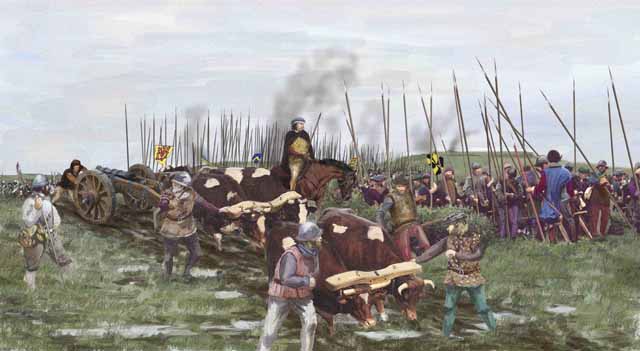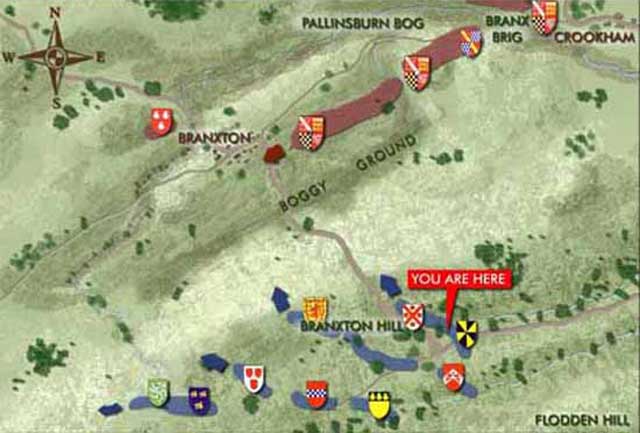After crossing the border in August 1513, the Scots army took the castles of Norham, Etal and Ford and then dug in their heavy guns on the slopes of Flodden Hill. From this stronghold, they awaited the arrival of the English army which was making its way north via York, Newcastle and Wooler. Aware of the strength of the Scottish positions, the Earl of Surrey hoped to entice James IV to meet him in a pitched battle on Milfield Plain, a few miles to the south, but James did not budge. Surrey then led his army in a wide flanking movement, making overnight camp at Barmoor, some five miles to the east of here. On the following morning, September 9th, he crossed the River Till by Twizel Bridge and approached from the north, a manoeuvre which took James IV by surprise. He rapidly had to move his entire army a mile or so across the country to face a force coming from the opposite direction.


Here, you are standing beside the track as the guns and equipment are hauled by teams of oxen across muddy ground made sodden by weeks of autumn rain.
Whilst the Scottish army was redeploying, the English took up position in three divisions or battles on the ridge where Branxton village now stands. Unfortunately for the Scots, there were parts of the landscape which are hidden from their view and they could not see the whole picture. In particular, they did not know the detail of the ground conditions in the dip between the two armies. This became a major factor in the outcome of the battle. Also, despite the huge effort involved in moving their cannon, they proved relatively ineffective compared to the lighter English guns as they had difficulty in finding their range.